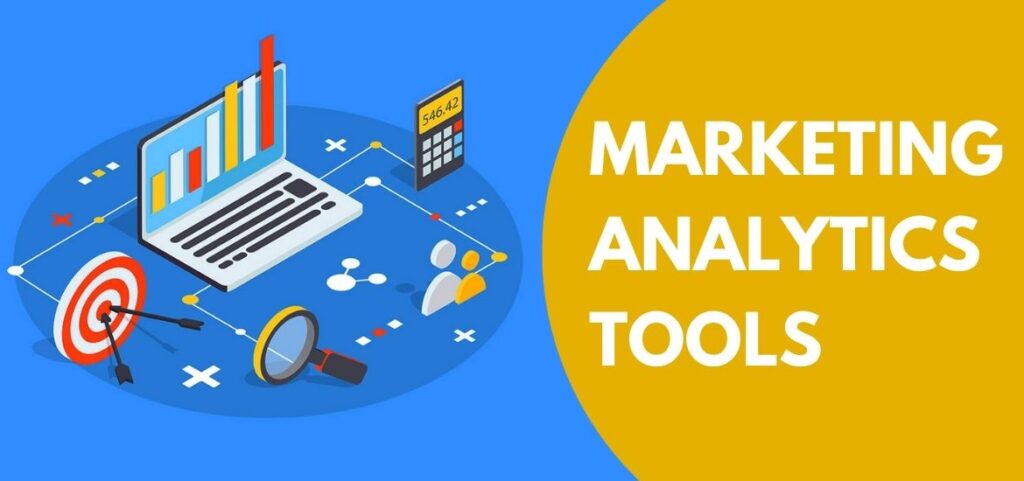Advanced Techniques in Marketing Analytics
In the rapidly evolving landscape of digital marketing, advanced analytics has emerged as a game-changer for businesses seeking to gain deeper insights, optimize campaigns, and drive meaningful ROI. By harnessing sophisticated data analysis techniques, marketers can uncover hidden patterns, predict trends, and make informed decisions that propel their strategies to new heights. Let’s delve into advanced analytics techniques that can revolutionize your marketing approach and enhance your competitive edge.

1. Predictive Modeling for Future Insights
Predictive analytics empowers marketers to forecast future trends and behaviors based on historical data patterns. By leveraging algorithms and statistical models, such as regression analysis and machine learning algorithms, businesses can anticipate customer preferences, segment audiences more precisely, and personalize marketing efforts effectively. Predictive modeling not only enhances targeting accuracy but also optimizes resource allocation for maximum impact.
2. Customer Lifetime Value (CLV) Analysis
Understanding the lifetime value of your customers is crucial for optimizing marketing strategies and maximizing profitability. Advanced analytics enables businesses to calculate CLV by analyzing customer acquisition costs, retention rates, and average purchase frequency. By identifying high-value customers and tailoring marketing efforts to nurture long-term relationships, organizations can enhance customer loyalty, reduce churn, and increase lifetime revenue per customer.
3. Attribution Modeling Across Channels
Attribution modeling addresses the challenge of accurately attributing credit to various marketing touchpoints along the customer journey. Advanced attribution models, such as multi-touch attribution and algorithmic attribution, allocate credit based on the influence of each touchpoint in driving conversions. This holistic view enables marketers to optimize budget allocation, refine channel strategies, and enhance the overall effectiveness of omnichannel marketing campaigns.
4. Marketing Mix Modeling (MMM)
Marketing mix modeling evaluates the impact of marketing activities on sales and ROI by analyzing historical data across different marketing channels and variables. By measuring the effectiveness of each marketing channel (e.g., TV ads, digital campaigns, promotions) and their interactions, MMM provides insights into optimal budget allocation and campaign optimization strategies. Marketers can adjust spending levels, allocate resources efficiently, and maximize the return on marketing investments.
5. Real-Time Analytics for Agile Decision-Making
Real-time analytics enables marketers to monitor and analyze data as it occurs, allowing for agile decision-making and immediate campaign optimizations. By leveraging technologies like real-time dashboards, data streaming, and automated alerts, businesses can respond swiftly to changing market conditions, consumer behaviors, and campaign performance metrics. Real-time insights empower marketers to capitalize on opportunities, mitigate risks, and maintain competitive agility in dynamic market environments.
6. Sentiment Analysis and Social Listening
Sentiment analysis utilizes natural language processing (NLP) and machine learning techniques to analyze consumer sentiments, opinions, and emotions expressed in textual data (e.g., social media posts, customer reviews). By monitoring social media conversations and online mentions, marketers can gauge brand perception, identify emerging trends, and address customer concerns proactively. Social listening insights inform content strategies, reputation management efforts, and personalized customer engagement initiatives.
7. Geo-Targeting and Location-Based Analytics
Geo-targeting leverages geographical data to deliver targeted marketing messages and promotions based on consumers’ physical locations. Location-based analytics analyze spatial data to uncover regional trends, customer behaviors, and preferences. By geo-fencing specific areas or using proximity marketing tactics, marketers can enhance local marketing campaigns, drive foot traffic to brick-and-mortar locations, and personalize offers based on regional insights.
8. Data Visualization and Interactive Dashboards
Data visualization tools and interactive dashboards transform complex analytics into visually compelling insights that are easy to understand and act upon. Graphs, charts, and heatmaps enable marketers to visualize key metrics, trends, and correlations intuitively. Interactive features allow for deeper exploration of data subsets and facilitate collaborative decision-making across marketing teams. Visual storytelling enhances communication of insights and supports data-driven strategies.
9. Cross-Device and Cross-Platform Analytics
In an interconnected digital ecosystem, cross-device and cross-platform analytics provide a unified view of customer interactions across devices (e.g., desktops, smartphones, tablets) and platforms (e.g., websites, mobile apps, social media). By tracking user journeys across multiple touchpoints, marketers gain insights into omnichannel behavior, attribution paths, and conversion pathways. Integrated analytics enable seamless user experiences and personalized marketing interactions tailored to individual preferences and device usage patterns.
10. Experimentation and A/B Testing
Experimentation and A/B testing are essential for optimizing marketing campaigns and validating hypotheses. Advanced analytics facilitate rigorous experimentation by testing variables (e.g., ad creatives, messaging, landing pages) and measuring performance metrics in controlled environments. By conducting systematic tests and analyzing results statistically, marketers can iterate rapidly, optimize conversion rates, and refine strategies based on empirical data-driven insights.
Empower your marketing strategy with advanced analytics techniques to unlock deeper insights, optimize performance, and drive sustainable growth. By embracing data-driven decision-making, continuous experimentation, and technological innovation, businesses can stay ahead of the curve in a competitive digital landscape. Stay tuned for more insights and practical tips to elevate your marketing analytics capabilities and achieve measurable success in your campaigns.

